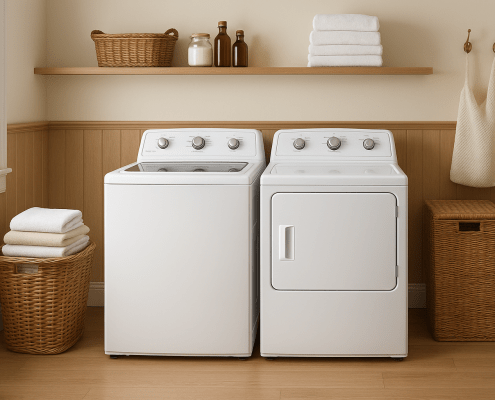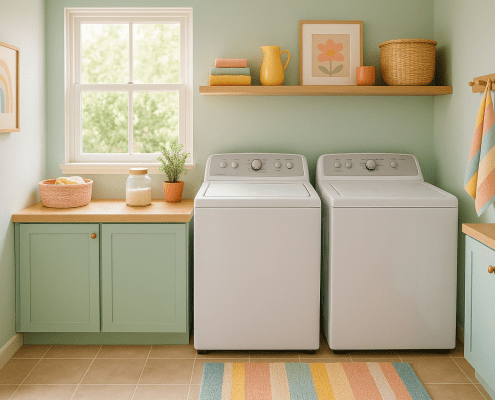Pro tips for replacing a Whirlpool / KitchenAid / Maytag washer drive belt W11239857
Steven E / Wednesday June 26, 2024
Is your Whirlpool, KitchenAid, or Maytag washer refusing to spin or agitate? A worn-out drive belt could be the culprit, but there’s no need to hire an expensive repair service. Dive into our step-by-step guide and accompanying how-to video below to replace that defective belt and get your appliance back in action, all on your own!
Looking for the right part? Enter your appliance model number below to find the exact match and get your appliance running like new again!
Got a bad drive belt in your Whirlpool, KitchenAid or Maytag washing machine? No need to worry. This is an easy DIY fix you can manage without the need for an expensive repair service.
You can find a replacement drive belt here. If you need other replacement parts for your Whirlpool washer, just enter your model number at AppliancePartsPros.com to find them. It’s that easy! Most orders arrive in just two business days, and we have thousands of guides to show you how to install your new parts.
What is the drive belt & why would it need to be replaced?
The drive belt is a rubber belt that connects the electric motor to the gear case and tub. When the motor spins, the drive belt rotates the gearcase pulley, which moves the basket or agitator depending on what mode the pulley clutch is shifted to.
Over time, this belt can become loose, damaged, or worn out from friction. A stretched or slipping belt can prevent your washer from agitating or spinning properly.
If the belt snaps, you’ll hear a very loud sound coming from the washer.
What you’ll need
- Replacement drive belt (make sure it’s compatible with your specific washer model before installing)
- 5/16-inch nut driver
Important: The specific tools required may vary depending on the model of your appliance and the type of fasteners used on it. Always consult the user manual or refer to any specific instructions provided by the manufacturer for the recommended tools for your appliance model.
Read more: Why It’s Best to Choose OEM Over Aftermarket Parts for Appliance Repairs
Safety precautions
When working on any appliance, remember to keep safety first. Here are some tips to keep in mind:
- Always power off and unplug your appliance or switch off the circuit breaker before you attempt any maintenance or replacement work. This keeps you safe by eliminating any risk of electric shock.
- If the appliance has recently been used, give it plenty of time to cool down before working on it.
- Turn off the water supply at the outlet before beginning repairs. Keep towels ready to catch any residual water in the system when removing parts.
- Take your time while working to prevent accidents and personal injuries. Rushing is the enemy of precision.
- Work in a well-lit area so you can see and access appliance parts.
- Keep your workspace free of clutter and other obstacles. Keep children and pets away from the work area.
- Never work on internal parts with wet hands. Make sure the work area is completely dry.
- Check the user manual to see if there are specific installation or safety instructions related to your appliance or replacement part.
- Be gentle when handling or removing parts. Excessive force might damage the appliance or cause personal injury.
- Wear insulated work gloves to protect your hands from sharp metal parts and debris.
- When working with wires, avoid touching any exposed wires or terminals. If you need to touch a wire, use a non-conductive tool or wear insulating gloves to prevent electrical shock.
- Always take photos or make a note of wiring terminals or other connections before disconnecting them to make reassembly easier.
How to install a new drive belt
Follow these steps to replace a faulty drive belt in your Whirlpool, KitchenAid or Maytag washing machine:
- Unplug the washer from the power outlet.
- Tilt the washer back slightly by leaning it against a wall so you can access the underside where the belt is located.
- Find the belt cover on the bottom of the washer, behind the front panel.
- Use a 5/16-inch nut driver to remove the two screws holding the belt cover. Set the screws aside.
- Pull the belt cover straight off and set it aside. The drive belt should now be exposed.
- Find the old drive belt around the motor pulley and gear case pulley. While holding the belt at one pulley, turn the other pulley to loosen the belt. Pull downward on the belt to remove it from both pulleys.
- Clean the area where the old belt was as needed. Make sure there’s no debris or remnants of the old belt before you install the new belt. If you need to wipe it down, make sure the area is completely dry before proceeding.
- Drape the new belt over the motor pulley. Make sure it’s seated well in the groove.
- Stretch the belt around the gear case pulley by turning the pulley while holding tension on the belt. Make sure it’s seated in the gear case pulley groove.
- Check that the belt is centered on both pulleys and hasn’t come off either pulley.
- Position the belt cover back in place by lining up the locator pin with the hole in the gear case.
- Use the 5/16-inch nut driver to reinstall the two screws that hold the belt cover.
- Carefully return the washer to the upright position.
- Plug the washer back in.
- Run a short test cycle to make sure the new belt is working correctly.
Read more: My part is no longer available! What do I do now?
More information
Thanks for reading! We hope this article helped you replace the drive belt in your Whirlpool, Maytag or KitchenAid washer.
If you still need some replacement parts, grab your model number and head over to AppliancePartsPros.com. We offer over 2 million parts and most orders arrive in 2-3 business days. If you need some help with finding the right part or placing an order, you can contact our team at 1 (877) 477-7278.
While you’re waiting for your new part to arrive, you can explore our DIY blog and watch thousands of video tutorials on our YouTube channel.
Be sure to follow us on Facebook, Twitter and Instagram to see our latest repair guides!
With nearly a decade of experience in providing top-notch customer service regarding appliance parts and repair, Steven enjoys sharing practical advice, troubleshooting tips, and interesting information to help readers stay informed.





